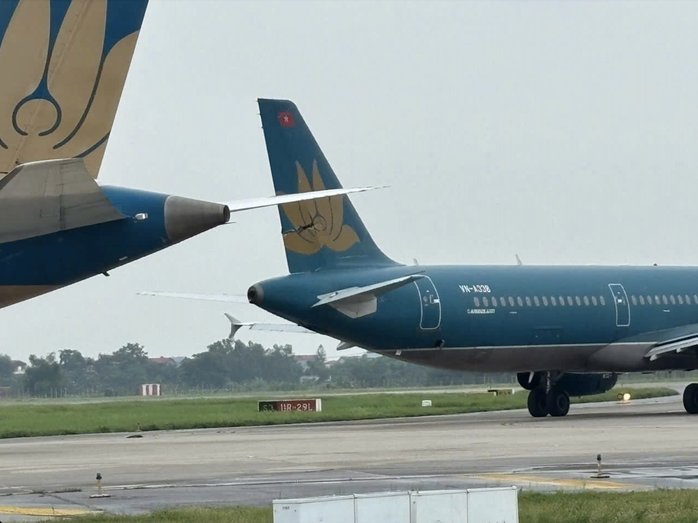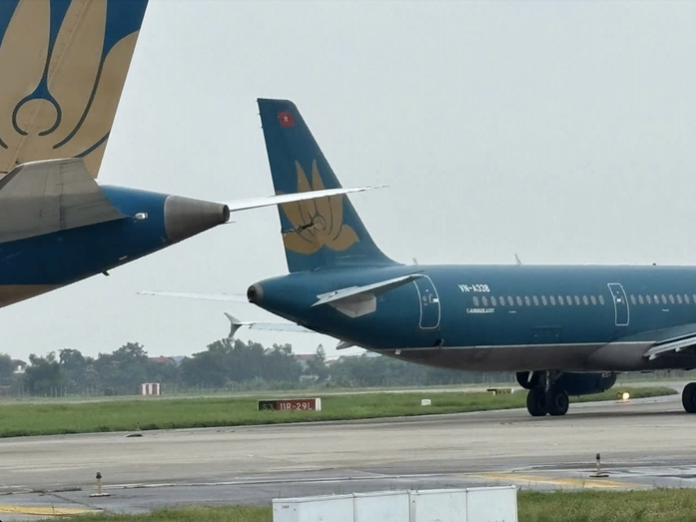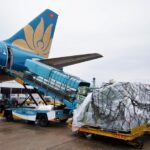The Civil Aviation Authority of Vietnam has reported to the Ministry of Construction and the National Committee for Traffic Safety on the plane crash at Noi Bai International Airport on June 27th.

Plane crash site on June 27th. Photo: NIA
Accordingly, the Civil Aviation Authority of Vietnam has collected information about the plane, flight crew, and flight, and sealed the plane’s self-recording device for investigation. An investigation team was also established to determine the cause of the incident.
The Civil Aviation Authority of Vietnam has assessed the plane crash as a serious incident (level B): an incident that seriously compromises safety, leading to the temporary closure of runways, taxiways, or aircraft parking areas, or the temporary closure of an airport.
Vietnam Airlines’ leadership has stated that the four pilots operating the two planes involved in the incident have been suspended from duty since the afternoon of June 27th pending an official conclusion on the matter.
The airline has formed an independent investigation team to investigate and assess the cause of the incident and collaborate with the investigation team from the Civil Aviation Authority of Vietnam. Vietnam Airlines is also working closely with relevant authorities to clarify the incident.
Video of the collision between two planes on the taxiway at Noi Bai Airport. Source: Vu Luat
As reported by NLD, the incident occurred around 2:23 pm on June 27th at the intersection of taxiways S3 and S.
The Airbus 321, with the flight number VNA338, was en route to Dien Bien and had stopped before entering the runway. At the same time, the Boeing 787, with the flight number VNA863, was heading to Ho Chi Minh City and was taxiing from its parking position to the runway. When it reached the intersection, the wingtip of the Boeing 787 collided with the vertical stabilizer of the Airbus 321.
Initial information gathered about the incident indicates that the collision caused damage to the right wingtip of the Boeing 787 and the vertical stabilizer and rudder of the Airbus 321. Several debris fell at the site, but all passengers and crew were safe. All 386 passengers were safely returned to the terminal, and Vietnam Airlines promptly arranged a replacement aircraft to continue their journey.
Immediately after the incident, Noi Bai International Airport and the Northern Aviation Authority coordinated with relevant units to access the site, prepare a report, and conduct an initial assessment. By 3:25 pm on the same day, the collision site was cleared to ensure safe flight operations.
The two aircraft involved were towed to parking positions and then taken to maintenance facilities for inspection and repair to support the investigation.
According to the Northern Aviation Authority, the initial cause of the incident was determined to be the Airbus 321 stopping in a position that violated regulations, leading to the collision.
Similar plane collision scenarios have occurred at several airports, with potential causes attributed to pilot error or air traffic controller mistakes.
Steady Steps Towards a Wider Horizon: Expanding Our Fleet and Network for a Brighter Future
As Vietnam’s flagship carrier and the leading airline in the country, Vietnam Airlines has embarked on a journey of resurgence and future-oriented expansion. With a robust fleet expansion and a host of new route explorations, the airline is taking off towards new horizons with renewed vigor and heightened aspirations.
Mastering the Art of Ancillary Revenue: Vietjet Air’s Success Story and Vietnam Airlines’ Tea and WiFi Plans
Vietnam Airlines’ leadership underscores the significance of ancillary revenue in the airline’s future strategy. This revenue stream is expected to become as substantial as cargo transportation earnings, playing a pivotal role in the company’s financial prospects.





















